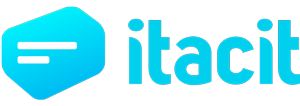Adjusting communication during the abrupt transition to remote work is an example of how companies adopt employee experience management technology. Prior to adjusting the tools your company uses, did anyone discuss the different styles and methods of communication that already exist?
I don’t mean the technology; I mean the reasons and ways that people would communicate.
- How much was in person versus email or phone?
- What was the difference between information conveyed between each medium
- What was the expected speed of response?
- Did spontaneous communication occur? How?
These are all questions that must be answered when choosing the tools you use in order to drive implementation. Workforce communication tools for manufacturing must be able to support the culture of the company.
Otherwise, the tail will be wagging the dog.
The employee experience technology your company uses is a key pillar of the workplace experience. Especially because more people have moved to working remotely, these platforms are a more dominant EX Factor than it used to be.
For more effective implementation of technology, it is imperative to understand three key data points: your culture, your reasons for implementation, and the impact on users.
Know your company and know your reasons for new EX technology
When bringing something like new healthcare LMS training software or a healthcare communication platform into the organization, defined goals around impact should be established. Many organizations have run into struggles because they have treated the technology itself as the solution, not the tool to achieve it.
The employee experience technology doesn’t solve the problem, how it is used does.
By including the employee lens into your tech decisions, you will develop trust, understand the needs of your employees, ease change management, and ensure alignment between the technology and organizational goals.
Your company is unique; therefore, its needs are unique.
A clear understanding of the company, the culture, and its goals are needed for effective decision-making regarding technology. When choosing software like an employee intranet software or employee app, you need to be sure you are intentional about your choices. Consider all “best practices” with scrutiny to ensure that they align with your organization and its strategy.
For instance, an enterprise communication tool that works well for one organization could detract from the existing systems or cultural processes within your own.
Any new technology would need to either integrate with or enhance your existing way of doing things. If it causes people a negative disruption to their daily work, they will be less likely to embrace it.

User-centric decisions will create the buy-in needed for broad adoption
People are too often seen as an obstacle to adoption rather than the reason. Technology serves the purpose to improve humans’ ability to do their jobs.
That is why you need to build human outcomes into the decision-making process. These human outcomes need to be visible to everyone. As well, they should be co-created with employees as they have information on how tools are being used within the organization.
Co-creation of decision standards will help your organization significantly ease the burden of change management as you implement the new tool. Employees will have pride of input into which solution will be chosen and how it will be used. By being a part of the decision, as well as learning the beneficial impact it will have on their work, employees will accept it more readily.
The necessity to vet technology options goes deeper than who has the best sales pitch and sexiest demo deck. Finding a tool which drives a core objective is only step one.
Ensuring technology will be a positive disruption to people’s workflow will drive implementation and impact. In the end, the tools are there to be used by the people so make sure the experience works for them and the company.











